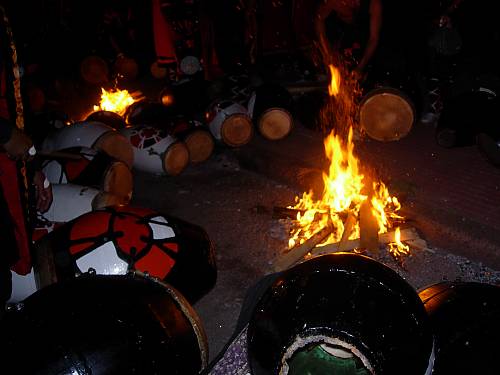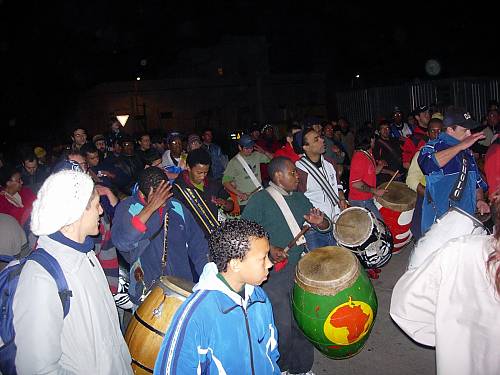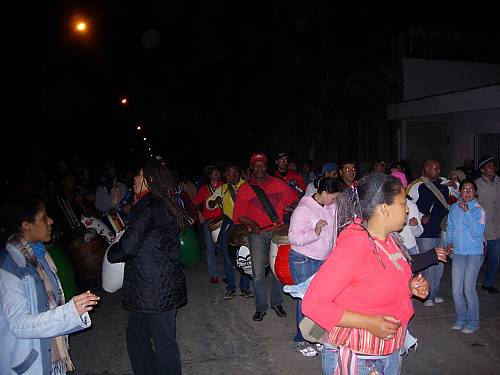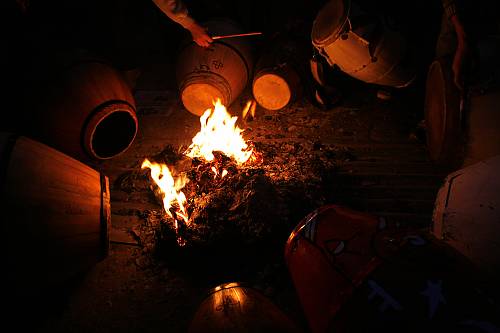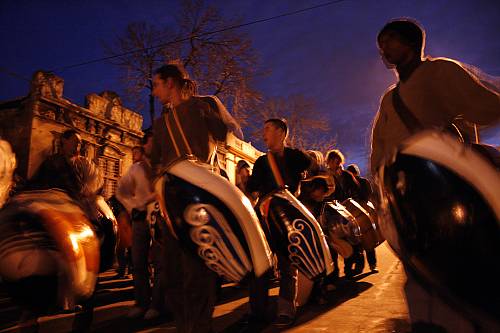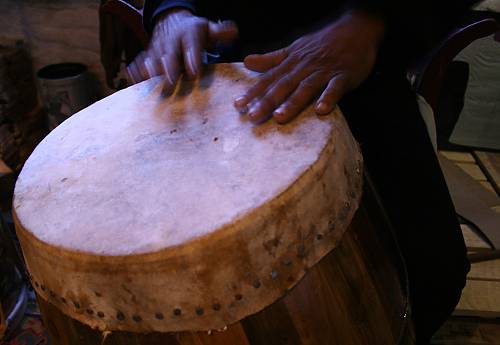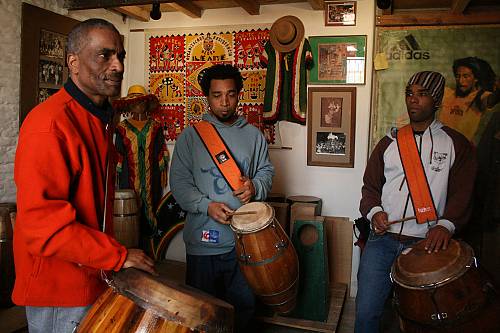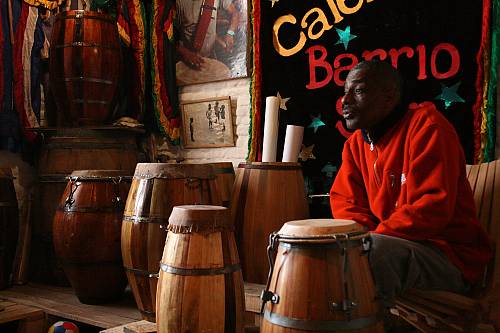Candombe and its socio-cultural space: a community practice
Inscribed in 2009 (4.COM) on the Representative List of the Intangible Cultural Heritage of Humanity

Every Sunday and on many holidays, the llamadas de tambores de candombe or candombe drum calls enliven the Sur, Palermo and Cordón districts in southern Montevideo, Uruguay, home to a population of African descent. The practice of the candombe begins around communal fires as people gather to tune their drums and socialize before beginning their march. Once underway, the drum-call parade is led by the most prestigious members, from families recognized by the community for their drumming for many generations; other drummers are organized behind them in rows, and informal participants, dancers and spectators march alongside or watch from balconies. The beat of the largest and deepest drum, the piano, is distinctive to each of the three neighbourhoods, so that the organized call and response structure of the candombe both unites the districts and signals their individual identities. Transmitted within families of African descent, the candombe is recognized as an expression of resistance as well as a Uruguayan musical celebration and collective social practice deeply interwoven in the daily life of these neighbourhoods. It is also a symbol and manifestation of the memory of the community, drawing former residents back on special days to the historical nucleus of candombe.
